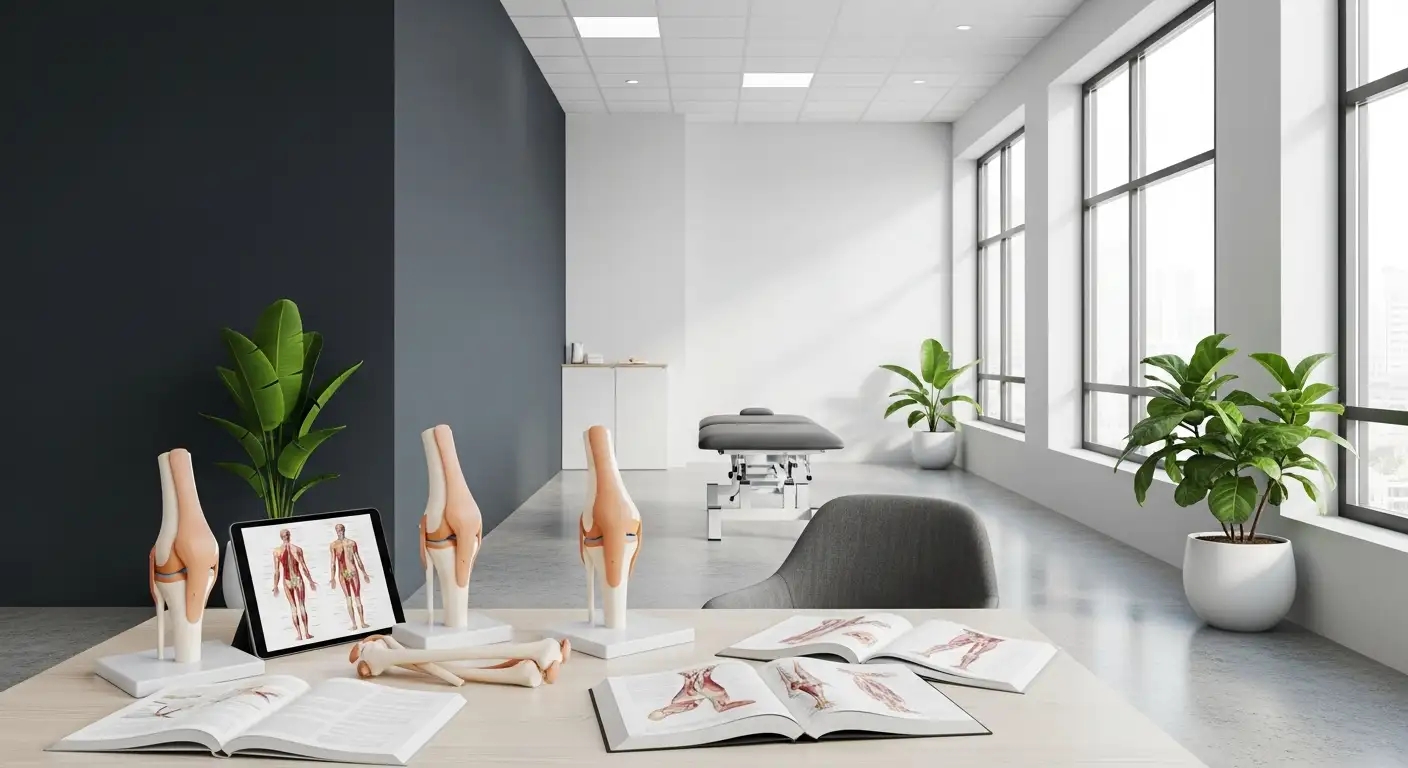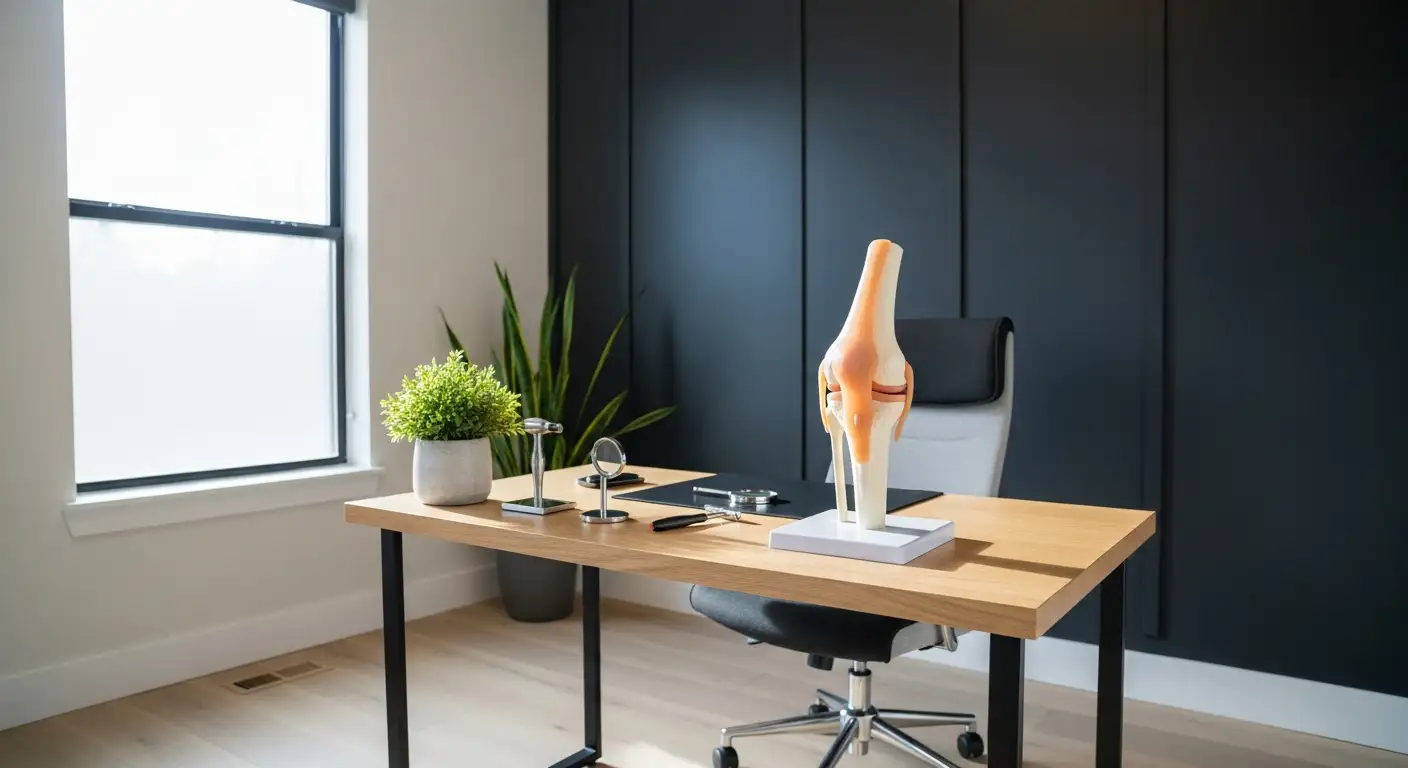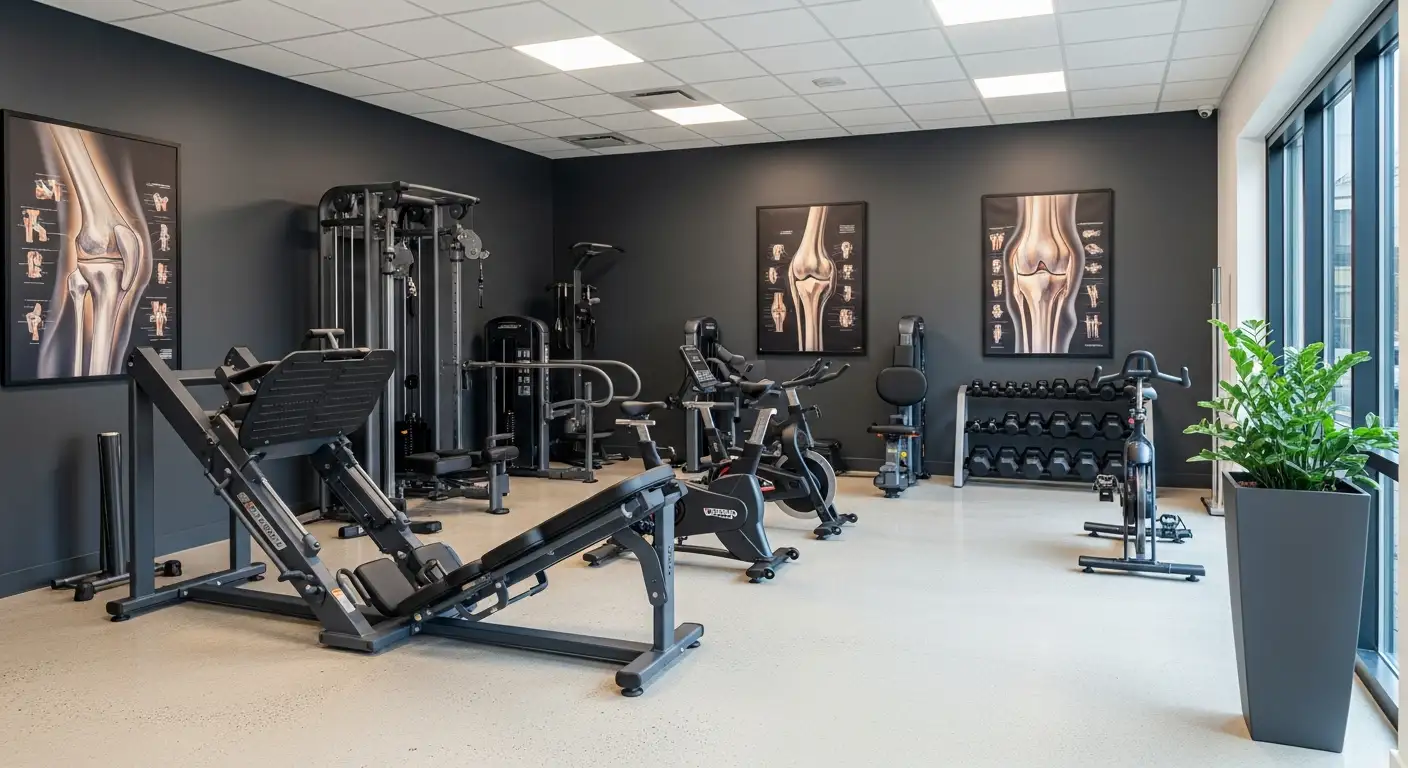Understanding Sharp Knee Pain
Sharp knee pain when transitioning from a sitting to a standing position can be a concerning and uncomfortable experience. It is important to understand the causes of this pain and know when to seek medical attention.

Causes of Sharp Knee Pain
Several conditions can contribute to sharp knee pain when standing up from a sitting position. These include:
- Bursitis: Bursitis occurs when the bursae, fluid-filled sacs that cushion the knee joint, become inflamed. Repetitive movements, prolonged kneeling, or injury can lead to bursitis, resulting in sharp knee pain when rising from a seated position.
- Patellofemoral Pain Syndrome: Patellofemoral pain syndrome is characterized by pain in the front of the knee, especially during activities that involve bending the knee, such as squatting or climbing stairs. This condition can also cause sharp knee pain when transitioning from sitting to standing [1].
- Meniscus Tears: Meniscus tears can occur due to sudden twisting movements or degenerative changes in the knee. These tears can cause sensations of locking, catching, or giving way in the joint, leading to sharp knee pain when standing up from a sitting position [1].
When to Seek Medical Attention
It is important to pay attention to the severity and duration of the sharp knee pain when transitioning from sitting to standing. In some cases, medical attention may be necessary. You should consider seeking medical help if:
- The pain is severe or interferes with daily activities.
- The knee appears red, warm, or swollen.
- The pain persists or worsens over time.
- You experience a sudden inability to bear weight on the affected knee.
- You have a history of knee injury or underlying medical conditions such as arthritis.
A healthcare provider can provide a proper diagnosis and recommend appropriate treatment options based on the underlying cause of the sharp knee pain.
Understanding the causes of sharp knee pain and knowing when to seek medical attention is essential for managing and treating this discomfort. Early intervention can help prevent further complications and promote a speedy recovery.
Common Conditions Associated with Sharp Knee Pain
Sharp knee pain when transitioning from a sitting to a standing position can be attributed to various underlying conditions. Understanding these common conditions can help individuals recognize the cause of their pain and seek appropriate treatment. Three frequently encountered conditions associated with sharp knee pain are bursitis, patellofemoral pain syndrome, and meniscus tears.
Bursitis and Knee Pain
Bursitis is a common cause of sharp knee pain when rising from a seated position. It occurs due to the inflammation of the bursae, fluid-filled sacs that cushion the knee joint. Repetitive movements, prolonged kneeling, or injury can lead to bursitis in the knee. The specific location of the pain indicates which bursa is affected.
Patellofemoral Pain Syndrome
Another potential cause of sharp knee pain upon standing is patellofemoral pain syndrome. This condition is characterized by pain in the front of the knee, particularly during activities that involve bending the knee, such as squatting or climbing stairs. Pain may also be exacerbated by sitting for extended periods with a bent knee. Patellofemoral pain syndrome is often accompanied by a generalized ache behind the kneecap.
Meniscus Tears and Knee Pain
Meniscus tears can also result in sharp knee pain when standing up from a seated position. These tears commonly occur due to sudden twisting movements or degenerative changes in the knee. Individuals with meniscus tears may experience sensations of locking, catching, or giving way in the joint.
It is important to note that knee pain can have various causes, and a proper diagnosis is essential for effective treatment. If experiencing knee pain when transitioning from sitting to standing, it is advisable to consult a healthcare provider who can evaluate the symptoms, perform a physical examination, and recommend appropriate treatment options based on the individual's specific condition.
Other Factors Contributing to Sharp Knee Pain
In addition to the conditions discussed earlier, there are several other factors that can contribute to sharp knee pain when transitioning from a sitting to a standing position. These factors include osteoarthritis, obesity, and muscle weakness.
Osteoarthritis and Knee Pain
Osteoarthritis is a common cause of knee pain, particularly in older adults. This condition occurs when the protective cartilage on the ends of the bones in the knee joint wears down over time. When standing up from a sitting position, the stress placed on the knee joint can exacerbate the pain associated with osteoarthritis. The resulting sharp knee pain can make it challenging to perform everyday activities.
Obesity and Knee Pain
Excessive weight can also contribute to knee pain, which may be aggravated when standing up from a seated position. The knees bear the weight of the body, and the additional strain from excess weight can put increased pressure on the knee joints. According to the Mayo Clinic, obesity is a significant risk factor for developing knee pain.
Muscle Weakness and Knee Pain
Muscle weakness, particularly in the muscles surrounding the knee joint, can lead to instability and increased stress on the knee. When standing up from a seated position, weak muscles may struggle to provide adequate support, resulting in sharp knee pain. Strengthening the muscles around the knee through targeted exercises can help improve stability and reduce knee pain.
It's important to note that other factors, such as knee injuries and overuse issues, can also contribute to sharp knee pain. Injuries like ligament tears, fractures, dislocation, and meniscus tears can cause significant pain when transitioning from sitting to standing [3].
Addressing these contributing factors is crucial for managing and alleviating sharp knee pain. Seeking appropriate medical evaluation and considering treatment options tailored to the underlying causes can help individuals find relief. Working with healthcare professionals, including physical therapists, can provide guidance on strengthening exercises, proper posture and body mechanics, and the importance of supportive footwear in managing knee pain.
Diagnosis and Treatment Options
When experiencing sharp knee pain while transitioning from a sitting to a standing position, seeking proper diagnosis and treatment options is essential for effective management. Consulting a healthcare provider can help determine the underlying cause and develop an appropriate treatment plan.
Seeking Proper Diagnosis
To effectively address sharp knee pain, it is crucial to obtain a proper diagnosis. A healthcare professional will conduct a thorough examination, which may include reviewing medical history, evaluating symptoms, and performing specific tests. Imaging tests such as X-rays or MRIs may be necessary to identify any structural abnormalities or injuries [5].
Treatment Approaches for Knee Pain
Treatment options for sharp knee pain when transitioning from sitting to standing can vary depending on the underlying cause. Non-surgical approaches are typically recommended as the initial line of treatment and may include:
- Physical therapy: A trained therapist can develop a personalized exercise program designed to strengthen the muscles supporting the knee joint, improve flexibility, and promote stability [6].
- Activity modification: Adjusting activities that exacerbate knee pain, such as limiting high-impact exercises or avoiding prolonged periods of sitting or standing, can help reduce discomfort.
- Pain management strategies: Over-the-counter nonsteroidal anti-inflammatory drugs (NSAIDs) may provide temporary relief from pain and inflammation. Your healthcare provider may also recommend other pain management techniques, such as ice or heat therapy, to alleviate symptoms.
- Corticosteroid injections: In some cases, corticosteroid injections may be administered directly into the knee joint to reduce inflammation and provide temporary pain relief [5].
Surgical Interventions for Severe Cases
For severe cases of sharp knee pain that do not respond to conservative treatments, surgical interventions may be considered. Surgical options depend on the specific cause of the knee pain and may include:
- Arthroscopic surgery: Minimally invasive procedures performed using a tiny camera and specialized instruments to repair or remove damaged tissues, such as torn ligaments or meniscus tears.
- Joint replacement surgery: In cases of severe joint degeneration, joint replacement surgery may be recommended to replace the damaged knee joint with an artificial joint.
Surgical interventions are typically reserved for cases where conservative treatments have not provided sufficient relief or when there is significant structural damage [8].
Proper diagnosis and consideration of various treatment options, including non-surgical approaches and surgical interventions for severe cases, can help address sharp knee pain when transitioning from sitting to standing. It is important to consult with a healthcare professional to determine the most appropriate course of action based on the underlying cause of the pain.
Prevention and Management of Knee Pain
When it comes to preventing and managing knee pain, there are several strategies that can help alleviate discomfort and promote overall knee health. This section will explore three important aspects: strengthening exercises for knee stability, proper posture and body mechanics, and the importance of supportive footwear.
Strengthening Exercises for Knee Stability
Strengthening exercises play a crucial role in preventing and managing knee pain. By focusing on the muscles surrounding the knee joint, such as the quadriceps, hamstrings, hips, and core muscles, you can improve knee stability and support healthy knees [6]. Strengthening the quadriceps, hips, and core muscles is particularly important in maintaining knee stability.
Here are a few exercises that can help strengthen the muscles around the knee:
- Quad sets: Sit on the floor with your legs straight. Tighten the muscles on the front of your thigh, hold for a few seconds, and then relax.
- Hamstring curls: Stand behind a chair and hold onto it for support. Bend one knee, bringing your heel toward your buttocks, and then slowly lower it back down.
- Clamshells: Lie on your side with your knees bent and your feet together. Keeping your feet touching, raise your top knee as high as you comfortably can, and then lower it back down.
- Bridges: Lie on your back with your knees bent and feet flat on the floor. Lift your hips off the ground, creating a straight line from your knees to your shoulders.
Remember to consult with a healthcare professional or physical therapist before starting any exercise program, especially if you have existing knee pain or injuries.
Proper Posture and Body Mechanics
Maintaining proper posture and practicing good body mechanics can help reduce stress on the knees and alleviate pain when transitioning from a sitting to a standing position. Factors such as poor posture, muscle imbalance, overuse, trauma, or underlying conditions like osteoarthritis can contribute to knee pain when sitting [7]. By focusing on proper alignment and body mechanics, you can minimize unnecessary strain on the knees.
Here are a few tips for maintaining proper posture and body mechanics:
- Sit with your back straight and shoulders relaxed.
- Avoid crossing your legs for extended periods.
- When standing up from a sitting position, engage your core muscles and use your leg muscles to lift yourself up rather than relying solely on your knees.
- Distribute your weight evenly between both feet when standing.
Making these small adjustments in your daily activities can help reduce the stress on your knees and promote better knee health.
Importance of Supportive Footwear
Wearing supportive footwear is essential for preventing and managing knee pain. The right shoes can provide proper cushioning, stability, and alignment, reducing the impact on your knees. Physical therapy, strengthening exercises, and supportive footwear can help manage and prevent sharp knee pain associated with conditions like patellofemoral pain syndrome.
When selecting footwear, consider the following:
- Choose shoes with good arch support to help distribute weight evenly.
- Look for cushioning in the soles to absorb shock and reduce impact on the knees.
- Opt for shoes with a proper fit to ensure comfort and stability.
- Consider using orthotic inserts or insoles if additional support is needed.
By wearing supportive footwear, you can provide your knees with the necessary support and reduce the risk of knee pain and discomfort.
By incorporating strengthening exercises for knee stability, practicing proper posture and body mechanics, and wearing supportive footwear, you can proactively prevent and manage knee pain. However, it's important to remember that every individual is unique, and it's best to consult with a healthcare professional or physical therapist for personalized advice and recommendations based on your specific condition and needs.
References
[1]: https://www.healthline.com/health/knee-pain-when-sitting
[2]: https://my.clevelandclinic.org/health/symptoms/21207-knee-pain
[3]: https://www.knee-pain-explained.com/sharp-knee-pain.html
[4]: https://www.health.harvard.edu/staying-healthy/do-these-activities-hurt-your-knees
[5]: https://atlaspainspecialists.com/sharp-knee-pain-that-comes-and-goes/
[6]: https://www.hss.edu/article_exercise-for-sore-knees.asp
[7]: https://www.verywellhealth.com/knee-pain-when-sitting-5095805
[8]: https://www.webmd.com/pain-management/knee-pain/knee-pain-dos-and-donts





